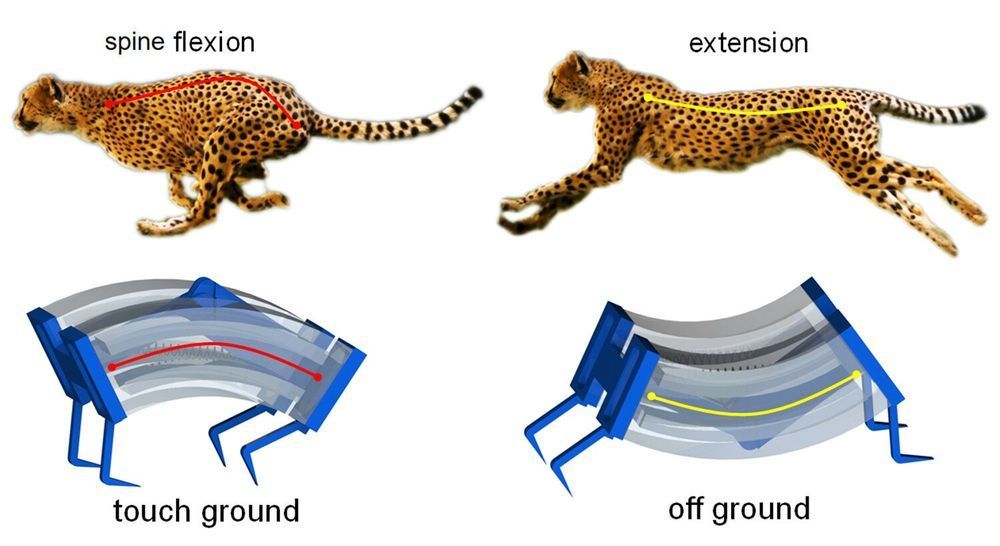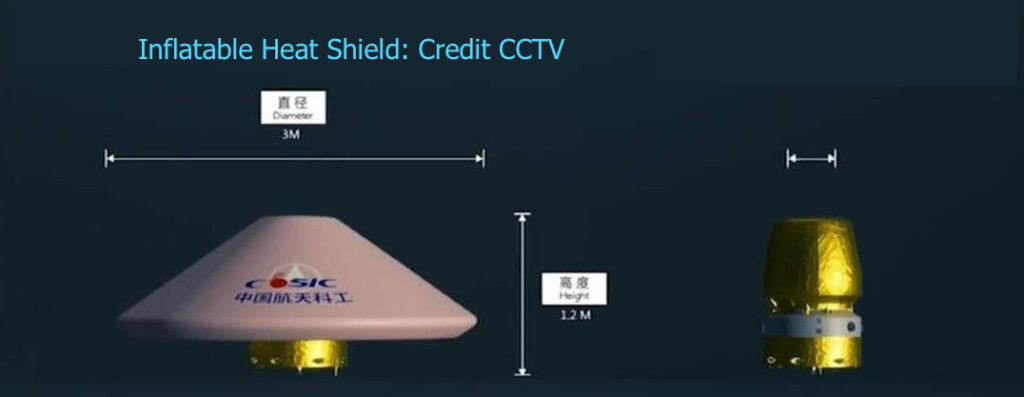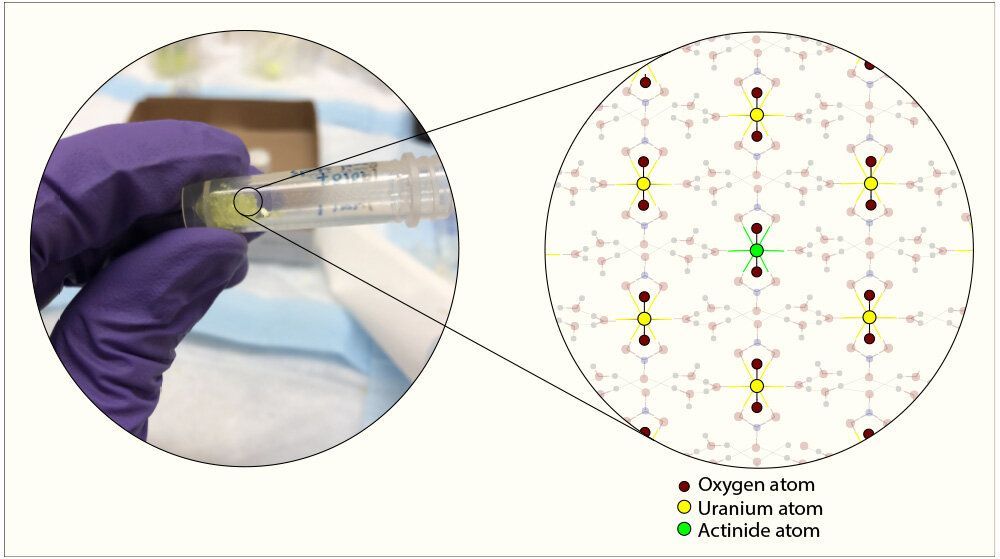Virtual #RegeneronISEF brings together the science and engineering community for a celebration of STEM in a free online event featuring top scientists and influential entrepreneurs. Register today!
Category: engineering – Page 191

NASA, partners launch virtual hackathon to develop COVID-19 solutions
The U.S. space agency National Aeronautics Space Administration (NASA), European Space Agency (ESA), and Japan Aerospace Exploration Agency (JAXA) are inviting coders, entrepreneurs, scientists, designers, storytellers, makers, builders, artists, and technologists to participate in a virtual hackathon May 30–31 dedicated to putting open data to work in developing solutions to issues related to the COVID-19 pandemic.
During the global Space Apps COVID-19 Challenge, participants from around the world will create virtual teams that – during a 48-hour period – will use Earth observation data to propose solutions to COVID-19-related challenges ranging from studying the coronavirus that causes COVID-19 and its spread to the impact the disease is having on the Earth system. Registration for this challenge opens in mid-May.
“There’s a tremendous need for our collective ingenuity right now,” said Thomas Zurbuchen, associate administrator for NASA’s Science Mission Directorate. “I can’t imagine a more worthy focus than COVID-19 on which to direct the energy and enthusiasm from around the world with the Space Apps Challenge that always generates such amazing solutions.”
The unique capabilities of NASA and its partner space agencies in the areas of science and technology enable them to lend a hand during this global crisis. Since the start of the global outbreak, Earth science specialists from each agency have been exploring ways to use unique Earth observation data to aid understanding of the interplay of the Earth system – on global to local scales – with aspects of the COVID-19 outbreak, including, potentially, our ability to combat it. The hackathon will also examine the human and economic response to the virus.
Electric Helicopters Are Coming
Circa 2019
The electrification of mobility has hit every industry to some degree or another, with some barely catching on but now doing so. The helicopter industry has been slow to adopt electricity, but the Californian consulting company Tier 1 Engineering is up to the challenge. Tier 1 Engineering Converts a Helicopter to Electricity, Snatches Guinness World Record
Tier.

Inspired by cheetahs, researchers build fastest soft robots yet
Inspired by the biomechanics of cheetahs, researchers have developed a new type of soft robot that is capable of moving more quickly on solid surfaces or in the water than previous generations of soft robots. The new soft robotics are also capable of grabbing objects delicately—or with sufficient strength to lift heavy objects.
“Cheetahs are the fastest creatures on land, and they derive their speed and power from the flexing of their spines,” says Jie Yin, an assistant professor of mechanical and aerospace engineering at North Carolina State University and corresponding author of a paper on the new soft robots.
“We were inspired by the cheetah to create a type of soft robot that has a spring-powered, ‘bistable’ spine, meaning that the robot has two stable states,” Yin says. “We can switch between these stable states rapidly by pumping air into channels that line the soft, silicone robot. Switching between the two states releases a significant amount of energy, allowing the robot to quickly exert force against the ground. This enables the robot to gallop across the surface, meaning that its feet leave the ground.

Graphene Nanomesh: New Nanotechnology ‘Brick’ for Modern Micromachines
Researchers at Japan advanced institute of science and technology (JAIST) have successfully fabrication the suspended graphene nanomesh in a large area by the helium ion beam microscopy. 6nm diameter nanopores were pattern on the 1.2 um long and 500 nm wide suspended graphene uniformly. By systematically controlling the pitch (nanopore’s center to nanopore’s center) from 15 nm to 50 nm, a series of stable graphene nanomesh devices were achieved. This provides a practical way to investigate the intrinsic properties of graphene nanomesh towards the application for gas sensing, phonon engineering, and quantum technology.
Graphene, with its excellent electrical, thermal and optical properties, is promising for many applications in the next decade. It is also a potential candidate instead of silicon to build the next generation of electrical circuits. However, without a bandgap, it is not straightforward to use graphene as field-effect transistors (FETs). Researchers tried to cut the graphene sheet into a small piece of graphene nanoribbon and observed the bandgap opening successfully. However, the current of graphene nanoribbons is too low to drive the integrated circuit. In this case, the graphene nanomesh is pointed out by introducing periodical nanopores on the graphene, which is also considered as very small graphene nanoribbon array.
A research team led by Dr Fayong Liu and Professor Hiroshi MIZUTA has demonstrated in collaboration with researchers at the National Institute of Advanced Industrial Science and Technology (AIST) that large area suspended graphene nanomesh is quickly achievable by the helium ion beam microscopy with sub-10 nm nanopore diameter and well-controlled pitches. Comparing to slow speed TEM patterning, the helium ion beam milling technique overcomes the speed limitation, and meanwhile, provides a high imaging resolution. With the initial electrical measurements, it has found that the thermal activation energy of the graphene nanomesh increased exponentially by increasing the porosity of the graphene nanomesh. This immediately provides a new method for bandgap engineering beyond the conventional nanoribbon method. The team plans to continue exploring graphene nanomesh towards the application of phonon engineering.

SpaceX describes exactly how they’re planning to make Starlink satellites less visible from Earth
In 2015, Elon Musk announced that his company, SpaceX, would be deploying satellites to orbit that would provide high-speed broadband internet access to the entire world. Known as Starlink, SpaceX began deploying this constellation in May of 2019 with the launch of the first 60 satellites. As of April 22, a total of 422 satellites have been added to the Starlink constellation, and the response hasn’t been entirely positive.
In addition to fears that we’re adding to the problem of “space junk,” there are also those who’ve expressed concern that Starlink and other constellations could have a negative impact on astronomy. In response, SpaceX recently announced that it will be instituting changes in how the satellites are launched, how they orbit the Earth, and even how reflective they are in order to minimize the impact they have on astronomy.
These changes were the subject of a presentation made during the Decadal Survey on Astronomy and Astrophysics 2020 (Astro2020) hosted by the National Academy of Sciences, Engineering, and Medicine. As part of the Optical Interference from Satellite Constellations Meeting held on Monday, April 27th, the Starlink Panel (which included Musk) presented how the company hopes to minimize light pollution caused by their constellation.

New game-changing Inflatable Space Tech NASA to test in 2022… China just tested it.
New spacecraft experience setbacks all the time. SpaceX Starship prototype violently disassembled several times. Boeing launched the CST-100 but ended up in the wrong orbit. China isn’t a stranger to setbacks either.
China tested a prototype spacecraft on May 5th, 2020 in efforts to prove the technology was ready. It’s good it was a test and not an actual mission since the spacecraft did not perform as expected. The news agency Xinhua reported the spacecraft launched from Hainan China, operated abnormally during its return.
Heat Shields Need to work or expect a terrible day.
Spacecraft experience tremendous heat during the last minutes of their mission. The heat shield protects the spacecraft from that heat. NASA looked at lots of materials and tested many before using for heat shields.

A new law for metamaterials
Metamaterials, which are engineered to have properties not found in nature, have long been developed and studied because of their unique features and exciting applications. However, the physics behind their thermal emission properties have remained unclear to researchers—until now.
In a paper published in Physical Review Letters, Sheng Shen, an associate professor in Carnegie Mellon’s department of mechanical engineering, and his student Jiayu Li, a Ph.D. candidate, have created a new scale law to describe the thermal emission from metasurfaces and metamaterials.
“With this new scale law uncovering the underlying physics behind the collective thermal emission behavior of metamaterials, researchers could easily utilize existing design and optimization tools to achieve desired thermal emission properties from metamaterials, instead of blindly searching for the best solution through mapping the entire design space,” Li said.

Study reveals single-step strategy for recycling used nuclear fuel
A typical nuclear reactor uses only a small fraction of its fuel rod to produce power before the energy-generating reaction naturally terminates. What is left behind is an assortment of radioactive elements, including unused fuel, that are disposed of as nuclear waste in the United States. Although certain elements recycled from waste can be used for powering newer generations of nuclear reactors, extracting leftover fuel in a way that prevents possible misuse is an ongoing challenge.
Now, Texas A&M University engineering researchers have devised a simple, proliferation-resistant approach for separating out different components of nuclear waste. The one-step chemical reaction, described in the February issue of the journal Industrial & Engineering Chemistry Research, results in the formation of crystals containing all of the leftover nuclear fuel elements distributed uniformly.
The researchers also noted that the simplicity of their recycling approach makes the translation from lab bench to industry feasible.

ACS Publications: Chemistry journals, books, and references published by the American Chemical Society
Here is a source of great information ACS Publications has:
‚300,000 Research Articles
‚000 News Stories
‚000 Book Chapters
‚000 References & Standards
You simply navigate the site and look for whatever you want. When reading I choose full text, but some I download the pdf because I enjoy rereading. Once you visit the site you will see just how many publications they have. They have something for everyone.